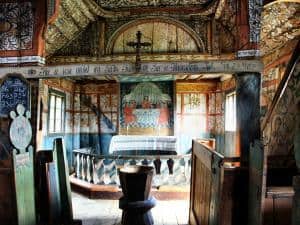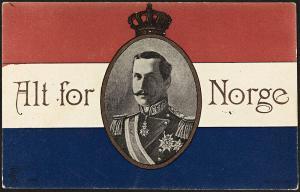
Rosemaling is a traditional Norwegian form of decorative folk art. It came into existence around 1750 on the eastern low-lands of Norway in Telemark and Hallingdal but also in the valleys of the counties West-Agder, Hordaland, Sogn og Fjordane and Rogaland.
The artists who specialized in Rosemaling would travel around, offering their services to churches and residential homes, often for the price of room and board. In churches, Rosemaling would be used to adorn altars and pulpits, and in homes the artists would decorate cupboard doors, furniture and household items with the graceful art.
Usually floral designs, the work includes C and S strokes influenced by the Rococco style, and both subtle and vibrant colors are used. While gilt was often incorporated by artists in the cities, rural artisans with no access to gold leaf would decorate with the colors favored in traditional dress (bunads) of the each local community.
As the art form became more popular, amateurs would copy the work and lend their own flare to the designs. Eventually, three distinctive regional styles solidified; Telemark, Rogaland and Hallingdal.
Fun Fact
An interesting story shows how ingrained Rosemaling is in the Norwegian culture. When Norway was invaded during WWII, use of the Norwegian flag or State Coat of Arms was banned by the Nazis. Norwegians turned to Rosemaling to incorporate the Royal cypher – an H and a 7 – of their exiled King into the Rosemaling artwork without the German occupation forces noticing.



